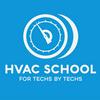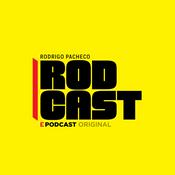868 episodios

Combustion Analysis w/ Tony G.
25/12/2025 | 50 min
In this comprehensive training session from the symposium, Tony Gonzalez, Training Director at Fieldpiece, delivers an engaging and practical guide to combustion analysis for HVAC technicians. With 25 years of experience at Fieldpiece—from warehouse worker to training director—Tony brings both technical expertise and real-world application to this 50-minute interactive session focused on the company's CAT 85 combustion analyzer. Tony emphasizes that combustion analysis serves four critical purposes: safety, efficiency, equipment specification verification, and liability protection. He makes a compelling business case for investing in combustion analyzers, noting that preventing just two callbacks or one liability lawsuit can pay for the equipment ten times over. The training walks attendees through the complete process, from properly warming up the analyzer in fresh air (allowing sensors to calibrate to ambient oxygen and zero carbon monoxide) to generating professional PDF reports that can be shared with customers or integrated into work order management systems like ServiceTitan. The session provides detailed guidance on interpreting key measurements, including stack temperature, oxygen percentage, carbon monoxide levels, and draft pressure. Using design parameters from the National Comfort Institute, Tony demonstrates how to diagnose issues by comparing actual readings against acceptable ranges for different furnace types (atmospheric, 80% induced fan, and 90+ percent condensing). He walks through practical troubleshooting scenarios, showing how measurements like high oxygen combined with low stack temperature can point to specific problems like low gas pressure that technicians can then verify and correct. Throughout the presentation, Tony emphasizes proper technique and best practices, from creating test ports at least 12 inches above the inducer fan to the importance of plugging test ports after completion. He also highlights innovative features of Fieldpiece's analyzers, including the hydro cycle pump that eliminates traditional water traps, sensor vault technology that extends sensor life to four years, and built-in wireless connectivity allowing technicians to view measurements on their mobile devices through the Job Link app. Topics Covered: Why perform combustion analysis: Safety verification, efficiency optimization, OEM specification compliance, and liability protection Business benefits: Reducing callbacks, improving OEM relationships, enhancing professional image, and protecting against lawsuits Proper startup procedure: Warming up analyzers in fresh air for accurate oxygen and CO sensor calibration Ambient CO testing: Using combustion analyzers vs. dedicated walk-around detectors for carbon monoxide detection in living spaces Test port installation: Proper placement at least 12 inches above inducer fans and away from 90-degree elbows Key measurements explained: Stack temperature, oxygen percentage, CO PPM, CO air-free, draft pressure, and efficiency calculations Equipment type selection: Choosing correct settings for atmospheric, 80% induced fan, or 90+ percent condensing furnaces Diagnostic interpretation: Using National Comfort Institute parameters to identify issues like excess combustion air or low gas pressure Advanced features: Built-in dual port manometer for gas and static pressure, wireless Job Link app connectivity, and hydro cycle pump technology Report generation: Creating professional PDF reports with company branding for customer documentation and CYA protection Maintenance tips: Checking particle filters, understanding sensor vault technology, and the importance of annual calibration Sensor longevity: Four-year sensor life warranty and field-replaceable sensors without sending equipment for service Have a question that you want us to answer on the podcast? Submit your questions at https://www.speakpipe.com/hvacschool. Purchase your tickets or learn more about the 7th Annual HVACR Training Symposium at https://hvacrschool.com/symposium. Subscribe to our podcast on your iPhone or Android. Subscribe to our YouTube channel. Check out our handy calculators here or on the HVAC School Mobile App for Apple and Android.

Give Until it Hertz - The Battle Over Frequency - Short #271
23/12/2025 | 13 min
In this short podcast episode, we go back into the history of the trades, namely the battle over frequency (and how each side had to give until it hertz). The low hum of motors is alternating current: electricity moving back and forth through copper 60x per second (in the USA and Canada, at least). In another version of history, that pulse could be 50x per second instead (as in much of the remainder of the world). The forgotten frequency war is the lesser-known sequel to the war of the currents. Tesla's AC power prevailed over Edison's DC, but different motor and generator companies chose different alternating current frequencies. Westinghouse chose 60 cycles per second, whereas General Electric experimented with 25-40 cycles per second, and Europe-based Siemens and AEG standardized around 50 hertz. These different frequencies set the rhythm for everything that turns or glows, and electric parts that didn't match often failed. Nevertheless, the engineers of the companies defended their own frequencies. In the 1910s, the US began merging electrical grids to set a single standard. Westinghouse had the most dominant technology at the time, and 60 hertz became the norm in the USA. However, across the pond, 50 hertz made more sense for the European infrastructure that was in place and being rebuilt after WWI, and it was solidified by the rebuilding efforts of WWII. As a result, roughly 2/3 of the planet uses a 50-hertz frequency. The two frequencies are incompatible because motors will travel at a different speed than their design while drawing the same current, leading to reduced capacity or overheating. In the 1960s, international companies produced dual-rated compressors and motors, but global trade is still complicated by different frequencies, and moving entirely to a single frequency is impractical due to the infrastructure disruption required. However, modern VFDs and inverter technology can change frequencies as they enter the motor, thus solving the battle over frequency and reminding us that flexibility is the real future. Have a question that you want us to answer on the podcast? Submit your questions at https://www.speakpipe.com/hvacschool. Purchase your tickets or learn more about the 7th Annual HVACR Training Symposium at https://hvacrschool.com/symposium. Subscribe to our podcast on your iPhone or Android. Subscribe to our YouTube channel. Check out our handy calculators here or on the HVAC School Mobile App for Apple and Android.

Residential vs. Commercial HVAC Sales
18/12/2025 | 50 min
In this candid conversation, Nathan and Bryan dive deep into the often-misunderstood world of sales in the construction and HVAC trades. Nathan, who has transitioned from fieldwork to spending roughly 60% of his time in sales, offers a unique perspective on why sales professionals are necessary despite the skepticism they face from tradespeople. The discussion tackles head-on the negative perceptions surrounding salespeople while making a compelling case for their essential role in growing and sustaining a trades business. The conversation explores the fundamental differences between residential and commercial sales, revealing insights that anyone in the industry will find valuable. Nathan explains that residential sales requires quick relationship-building, subject matter expertise, and the ability to emotionally connect and disconnect rapidly from customers you may only see every few years. It's essentially retail sales with a technical component. Commercial B2B sales, on the other hand, is far less transactional and much more relational—it's about building confidence, managing accounts effectively, and ensuring clients can focus on their core business while you handle their facility problems seamlessly. One of the most refreshing aspects of this discussion is Nathan's honesty about the unglamorous side of sales. He emphasizes that the job isn't about fancy lunches or golf outings—it's about being the person who answers their phone, follows through on commitments, and doesn't shy away from uncomfortable conversations. The guys share frustrating examples of poor salesmanship, from ghosting potential clients to making promises that can't be kept, illustrating how these failures give the entire profession a bad reputation. Nathan stresses that good sales is fundamentally about managing expectations, delivering on promises, and serving as the crucial liaison between customer needs and production capabilities. The conversation concludes with practical advice for tradespeople considering a move into sales: if you're motivated by the chase, enjoy solving people's problems, and find satisfaction in knowing your work directly impacts the bottom line, sales might be for you. But if you're just looking for an easier path with less physical labor, think again—great salesmanship is mentally demanding work that requires constant follow-through and resilience. Topics Covered: Why tradespeople are often critical of sales and the misconceptions about the profession The difference between "good" and "bad" salespeople and the moral use of sales skills Essential traits for successful residential HVAC salespeople, including product knowledge and emotional agility How commercial B2B sales differs from residential—less transactional, more relational The critical importance of follow-through, responsiveness, and keeping promises in account management Why sales serves as the essential "oil in the machine" that prevents business breakdowns The role of salespeople in managing customer expectations and protecting production teams The unsexy reality of sales work: constant uncomfortable conversations and problem-chasing When entertaining clients (golf, lunches) is appropriate versus when it becomes buying work Advice for tradespeople considering transitioning into sales roles Have a question that you want us to answer on the podcast? Submit your questions at https://www.speakpipe.com/hvacschool. Purchase your tickets or learn more about the 7th Annual HVACR Training Symposium at https://hvacrschool.com/symposium. Subscribe to our podcast on your iPhone or Android. Subscribe to our YouTube channel. Check out our handy calculators here or on the HVAC School Mobile App for Apple and Android.

When Ammonia Ruled the World - Short #270
16/12/2025 | 10 min
In this short podcast episode, Bryan takes us on a history journey back to when ammonia ruled the world. In the mid-1800s, before R-12, many inventors and scientists experimented with vapor-compression refrigeration systems to make ice. They used a variety of refrigerants in their patents, including ether, ethyl ether, carbon dioxide, sulfur dioxide, methyl chloride, and ammonia. Each one had tradeoffs, but ammonia was the favorite because it was inexpensive, very good at moving heat, and useful because its odor made leaks obvious (although it was toxic and irritated the lungs and mucus membranes). Toxic refrigerants, particularly sulfur dioxide and methyl chloride, were common refrigerants but had plenty of negative press due to the many deaths they caused. In response to the public's reservations about toxic refrigerants, Thomas Midgley from General Motors (who developed leaded gasoline) teamed up with Charles Kettering and DuPont to find a refrigerant that was non-toxic, non-flammable, and non-corrosive. In 1930, they announced dichlorodifluoromethane, also known as R-12 (a CFC) and trademarked as Freon. This refrigerant was non-toxic, non-flammable, and had no odor, and it effectively replaced the methyl chloride, sulfur dioxide, and ammonia. However, many decades later, scientists discovered that chlorine-bearing compounds were destroying the ozone layer. To combat the environmental damage, many nations signed the Montreal Protocol in the 1980s, which would effectively phase out R-12, R-11, and other CFC refrigerants. Over time, the regulations have tightened on HCFCs and high-GWP HFCs, leading us to where we are now with lower-GWP A2L HFCs and HFO blends. As with the old refrigerants, each refrigerant had a tradeoff. Meanwhile, this whole time, ammonia never became truly obsolete and quietly remained the lifeblood of industrial refrigeration, and it also had no global warming potential OR ozone-depletion potential. Ammonia systems run with relatively little charge, especially when paired with CO2, and ammonia is still a powerhouse today because of its chemical formula (NH3), good compression ratio, and excellent latent heat of vaporization. Have a question that you want us to answer on the podcast? Submit your questions at https://www.speakpipe.com/hvacschool. Purchase your tickets or learn more about the 7th Annual HVACR Training Symposium at https://hvacrschool.com/symposium. Subscribe to our podcast on your iPhone or Android. Subscribe to our YouTube channel. Check out our handy calculators here or on the HVAC School Mobile App for Apple and Android.

Humidity, Airflow, and Refrigeration
11/12/2025 | 50 min
In this episode of the HVAC School podcast, Bryan and Nathan dive deep into the challenges of humidity control in grocery stores and other refrigerated environments. While the conversation takes several entertaining detours (including discussions about morning radio shows, Indian weddings with elephants, and imaginary lava-heated homes), the core content provides valuable insights for HVAC and refrigeration technicians dealing with condensation and moisture issues in commercial refrigeration spaces. The hosts explain why humidity management is critical in grocery environments, where refrigerated cases and displays must maintain cold temperatures while preventing condensation on doors, frames, and floors. They discuss the evolution from traditional solutions—like energy-intensive frame heaters that kept surfaces above dew point—to modern strategies involving dedicated outdoor air systems (DOAS), strategic use of waste heat from refrigeration racks, and various dehumidification approaches. Nathan emphasizes that the key is maintaining proper dew point levels (typically targeting 45% relative humidity at around 72°F) while keeping the building under positive pressure to control moisture infiltration. A significant portion of the discussion focuses on airflow management and its impact on refrigeration equipment. The hosts explain how air curtains in display cases work on Bernoulli's principle to maintain cold temperatures, and why even minor disruptions to airflow patterns can cause product spoilage or increased energy consumption. They stress the importance of understanding building pressure dynamics, especially considering makeup air requirements for exhaust systems in sculleries and loading docks. The episode concludes with practical troubleshooting advice for technicians dealing with sweating cases and humidity problems. Nathan recommends systematically checking building pressure with a manometer, measuring dew point at multiple locations throughout the store, and verifying that door and frame heaters are functioning properly. He also suggests looking for intermittent fresh air sources and exhaust fans that might be disrupting the carefully balanced airflow patterns that keep moisture under control. Topics Covered: Dew Point vs. Relative Humidity: Why focusing on dew point (50-55°F typical target) is more important than relative humidity in grocery environments Condensation Prevention Strategies: Evolution from energy-intensive frame heaters to modern DOAS systems with reheat capabilities Airflow and Air Curtains: How Bernoulli's principle creates invisible barriers in refrigerated display cases and why disrupting these patterns causes problems Reheat Methods: Various approaches, including waste heat from refrigeration racks, electric reheat, and desiccant dehumidification systems Building Pressure Management: Importance of maintaining positive pressure while managing fresh air requirements and exhaust systems Radiant Heat Effects: How surface temperatures, not just air temperature, affect condensation on refrigerated cases Troubleshooting Humidity Issues: Systematic approach to diagnosing moisture problems, including pressure testing, dew point measurement, and identifying intermittent airflow sources Return Air Placement: Benefits of pulling return air from underneath cases to capture the most humid air for dehumidification Have a question that you want us to answer on the podcast? Submit your questions at https://www.speakpipe.com/hvacschool. Purchase your tickets or learn more about the 7th Annual HVACR Training Symposium at https://hvacrschool.com/symposium. Subscribe to our podcast on your iPhone or Android. Subscribe to our YouTube channel. Check out our handy calculators here or on the HVAC School Mobile App for Apple and Android.
Más podcasts de Economía y empresa
Podcasts a la moda de Economía y empresa
Acerca de HVAC School - For Techs, By Techs
Escucha HVAC School - For Techs, By Techs, Chisme Corporativo y muchos más podcasts de todo el mundo con la aplicación de radio.net

Descarga la app gratuita: radio.net
- Añadir radios y podcasts a favoritos
- Transmisión por Wi-Fi y Bluetooth
- Carplay & Android Auto compatible
- Muchas otras funciones de la app
Descarga la app gratuita: radio.net
- Añadir radios y podcasts a favoritos
- Transmisión por Wi-Fi y Bluetooth
- Carplay & Android Auto compatible
- Muchas otras funciones de la app


HVAC School - For Techs, By Techs
Descarga la app,
Escucha.







































